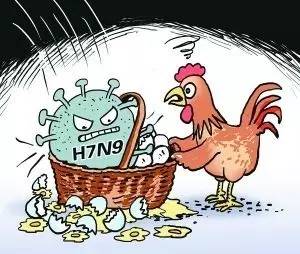1. Overview:
(1) Concept: Avian influenza (avian influenza) is a systemic highly contagious infectious disease in poultry caused by certain pathogenic serotype strains of type A influenza viruses.
Clinical symptoms: difficulty breathing, decreased egg production, serosal hemorrhage in organs throughout the body, and extremely high mortality rate.
(2) Etiological characteristics
According to different antigenicity: it is divided into 3 serotypes: A, B, and C. Type A can infect a variety of animals, and bird flu belongs to type A.
HA is divided into 1-16 types, and NA is divided into 1-10 types. There is no cross-protection between HA and NA.
To differentiate between avian influenza and chicken Newcastle disease, avian influenza virus can agglutinate in the red blood cells of horses and sheep, but chicken Newcastle disease cannot.
(3) Proliferation of viruses
Avian influenza viruses can grow in chicken embryos, so the viruses can be isolated and passaged by allantoic inoculation of 9-11-day-old chicken embryos.
(4) Resistance
Influenza viruses are sensitive to heat
56℃~30 minutes
high temperature 60℃~10 minutes Loss of activity
65~70℃, several minutes
-10℃~survive for several months to more than a year
-70℃~maintains infectivity for a long time
Low temperature (glycerin protection) 4℃~30 to 50 days (in feces)
20℃~7 days (in feces), 18 days (in feathers)
Frozen poultry meat and bone marrow can survive for 10 months.
Inactivation: formaldehyde, halogen, peracetic acid, iodine, etc.
2. Epidemiological characteristics
(1) Susceptible animals
Turkeys, chickens, ducks, geese and other poultry species most commonly infected in the natural environment (H9N2)
(2) Source of infection
Sick birds and recovered poultry can contaminate tools, feed, drinking water, etc. through excrement, secretions, etc.
(3) Pattern of incidence
The H5N1 subtype is transmitted through contact. The disease starts at one point in the chicken house, then spreads to adjacent birds in 1-3 days, and infects the entire flock in 5-7 days. The mortality rate of non-immune chickens in 5-7 days is as high as 90%~100%
Post time: Nov-17-2023

